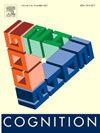Quantity discrimination in 9 ungulate species: Individuals take item number and size into account to discriminate quantities
IF 2.8
1区 心理学
Q1 PSYCHOLOGY, EXPERIMENTAL
引用次数: 0
Abstract
The ability to discriminate quantities is crucial for humans and other animals, by allowing individuals to maximize food intake and successfully navigate in their social environment. Here, we used a comprehensive approach to compare quantity discrimination abilities (i.e. ability to compare sets with different quantities of identical items, reliance on item size and spatial distribution, existence of irrational biases) in 9 different species of ungulates and provide novel insight into the socio-ecological conditions that might favor their emergence. We tested a total of 37 captive subjects including goats (Capra aegagrus hircus), llamas (Lama glama), guanacos (Lama guanicoe), Grevy's zebras (Equus grevyi), Chapman's zebras (Equus burchelli chapmanni), rhinos (Diceros bicornis michaeli), giraffes (Giraffa camelopardalis rothschildi), bison (Bison bonasus) and buffalos (Syncerus caffer nanus). Our results revealed that subjects were able to discriminate quantities when presented with two sets of food items that could differ in number, size and partially density. When presented with sets containing a different number of identical food items, subjects successfully selected the set with more items, with performance overall decreasing when sets had higher ratios (e.g., 1:3 vs 1:5). In addition, subjects could successfully maximize their food intake when both sets had the same number of items, but items had different sizes. However, performance decreased at chance levels when varying both the number of items and their size or distribution. Giraffes performed better than other species in most conditions, and we found no evidence for an irrational bias toward sets with more, smaller items or denser distributions. Overall, our study provides a first comparative assessment of quantity discrimination skills in several ungulate species.
9 种有蹄类动物的数量判别:个体在区分数量时会考虑物品的数量和大小
数量辨别能力对人类和其他动物至关重要,它能使个体最大限度地摄取食物,并成功地在社会环境中游刃有余。在这里,我们采用了一种综合方法来比较 9 种不同蹄类动物的数量辨别能力(即比较具有不同数量相同物品的集合的能力、对物品大小和空间分布的依赖性、是否存在非理性偏差),并对可能有利于其出现的社会生态条件提供了新的见解。我们一共测试了 37 个圈养对象,包括山羊(Capra aegagrus hircus)、骆马(Lama glama)、羚牛(Lama guanicoe)、格瑞斑马(Equus grevyi)和查普曼斑马(Chapman's zebras)、查普曼斑马(Equus burchelli chapmanni)、犀牛(Diceros bicornis michaeli)、长颈鹿(Giraffa camelopardalis rothschildi)、野牛(Bison bonasus)和水牛(Syncerus caffer nanus)。我们的研究结果表明,当两组食物的数量、大小和部分密度不同时,受试者能够区分数量。当一组食物中含有不同数量的相同食物时,受试者会成功地选择含有较多食物的一组,而当两组食物的比例较高时(如 1:3 与 1:5),受试者的整体表现会下降。此外,当两组食物的数量相同,但大小不同时,受试者也能成功地将食物摄入量最大化。然而,当物品数量、大小或分布都不同时,受试者的表现就会下降到偶然水平。在大多数情况下,长颈鹿的表现都优于其他物种,而且我们没有发现任何证据表明长颈鹿会不合理地偏向于选择物品数量更多、更小或分布更密集的食物组。总之,我们的研究首次对几种蹄类动物的数量辨别能力进行了比较评估。
本文章由计算机程序翻译,如有差异,请以英文原文为准。
求助全文
约1分钟内获得全文
求助全文
来源期刊

Cognition
PSYCHOLOGY, EXPERIMENTAL-
CiteScore
6.40
自引率
5.90%
发文量
283
期刊介绍:
Cognition is an international journal that publishes theoretical and experimental papers on the study of the mind. It covers a wide variety of subjects concerning all the different aspects of cognition, ranging from biological and experimental studies to formal analysis. Contributions from the fields of psychology, neuroscience, linguistics, computer science, mathematics, ethology and philosophy are welcome in this journal provided that they have some bearing on the functioning of the mind. In addition, the journal serves as a forum for discussion of social and political aspects of cognitive science.
 求助内容:
求助内容: 应助结果提醒方式:
应助结果提醒方式:


